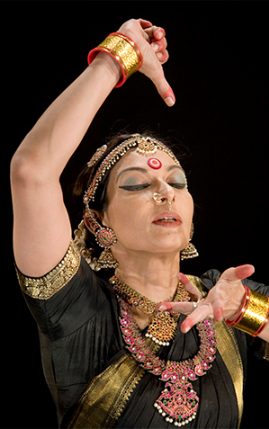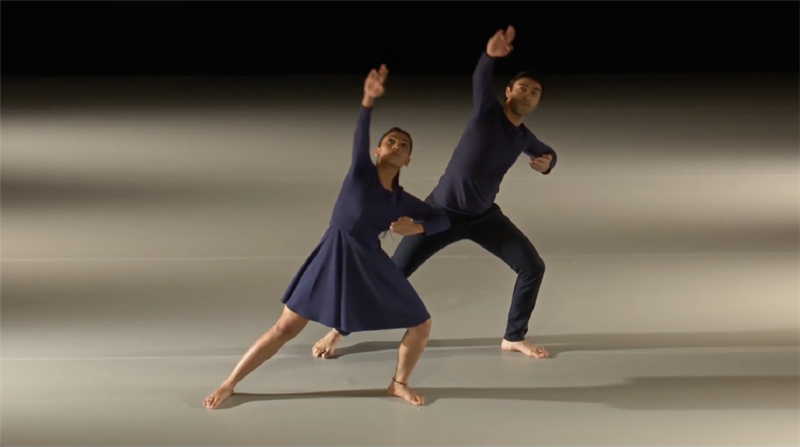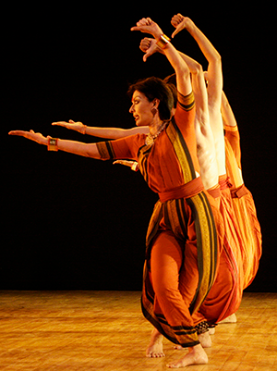



In this Bharatanatyam — a classical dance form of southern India — our heroines (known traditionally as “nayikas”1) go through various emotions in their journey of love for Shiva2. Some describe his amazing dance with his wife Parvati in the ancient Tamil Nadu town of Chitambaram. Another asks her friend to help bring him back to her. Some describe his beauty. One nayika gently scolds him for neglecting her when she has come to embrace him:
You were angry with and burnt Manmadha3, why are you angry with me? You blessed Markandeya5 and saved him from death, why don’t you free me from the world?
And finally in a joyous thillana6 they celebrate Shiva.
“Captivating performance.”—Manjari Sinha, The Statesman 2016
Dancers: 4
Language: Tamil (English subtitles provided)
Duration: 60 minutes
Choreography: Mrinalini and Mallika Sarabhai*


The lyrics for classical Bharatanatyam were written many hundreds of years ago, when humanity’s primary concern was the longing to find God or be united with the eternal One. The lyrics were primarily in Tamil and Telugu with later dancers bringing in the voices of Kabir, Meera, and other medieval poets.
Today we also speak of more current issues and thoughts, while still using the sophistry of the Bharatanatyam dance style.
In a first, Darpana artists wrote about their concerns, using myriad languages but keeping within the strict metre of classicism. “Finding My Voice” brings to audiences thoughts on global warming, an atheists relationship with the Goddess, sexual preferences, and the growing intolerance in the world, all in the strictest and most complex Pandanallur7 vocabulary.
“Spontaneous applause from the audience for their dexterous dancing.”
—Sunil Kothari, Narthaki.com 2016
“Each piece of Mallika Sarabhai’s production was meant to provoke or move the audience.” —The Hindu
“Sarabhai breaks open the language of classical dance.” —De Volkskraant, 2015
Dancers: 4
Languages: Tamil, Urdu, English, Hindustani (English subtitles provided)
Duration: 60 minutes
Choreography: Revanta and Mallika Sarabhai*
*About the Choreographers: Mrinalini Sarabhai (1918–2016), Mallika Sarabhai’s mother, was an Indian classical dancer, choreographer, and instructor. In 1949, Mrinalini and her husband, physicist Vikram Sarabhai (1919–1971) (widely regarded as the father of India's space program), established the Darpana Academy of Performing Arts, Ahmedabad, a school for the performing arts. Mallika Sarabhai is the current director of the school.
Revanta Sarabhai, Mallika’s son, is a dancer, choreographer, actor, and multimedia artist.